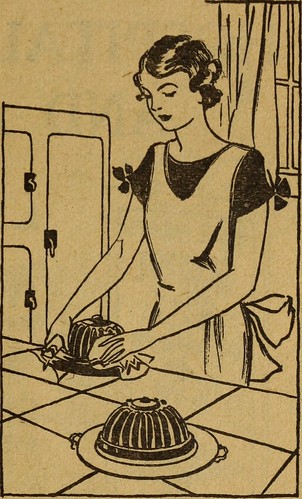This blog starts with a Graham pudding. Not one any of us consumed; like most of you readers, we had spent our lives unaware of its existence.
 |
The Criterion Restaurant, London, 1902
|
Rather, this Graham pudding was eaten by a Nathaniel Newham-Davis, at the Criterion Restaurant in Piccadilly, London, around 1914, and mentioned in his
The Gourmet's Guide to London. Graham puddings, he implied, were a typically American dessert, and their presence at the Criterion was dear to homesick American ex-pats.
The founders of this blog write historical fiction, and these kinds of references to assumed knowledge always get the attention of an astute historical novelist. So this "Graham pudding" was a big American dessert in 1914? Certainly good to know.
Of course it's difficult to leave there, whatever the demands of the fiction at hand. If this was such a big dessert in 1914, why have no Americans today heard of it? When did it stop being big?
A search of newspapers (on newspapers.com) gives over 1200 references to "graham pudding" in newspapers across the United States and Canada, mostly recipes and/or menus. There are some references from the late 19th century, then a rise around 1905, carrying through until the mid 1930s, when references plummet, then trickle out through the 50s and 60s before vanishing. Recipes for Graham pudding are also a mainstay in cookbooks through the ca.1890-1930 period, then disappear.
So this was indeed a widely popular American (and Canadian) dessert. Then it stopped being. The reason is a mystery.
The mystery deepens when one looks at recipes for Graham pudding. Though specifics vary, it is a pudding in the British sense, with a cakey-loafy core containing molasses, raisins, graham flour, spices, and other baking ingredients, steamed, then served with a sauce (which varies even more, but as a rule is rich and sweet). Far from the many toe-curling old recipes out there, the Graham pudding sounds
delicious.
Curiosity quickly turned to determination. We tried out the recipe. It
was delicious. (The specifics shall be this blog's first proper post--stay tuned!). So the question remains: why did we kill this?
From this beginning we decided it was high time to revisit some of the recipes of the early twentieth century. There are plenty of posts out there attempting to recreate awful-sound recipes from the mid-twentieth century; we aren't in search of the awful. Per se. We are indeed intrigued by the fact that people eagerly ate and concocted dishes that do sometimes include combinations that appear to jar to modern tastes, or those that just sound random. We are, however, equally intrigued by the Graham puddings of the past--the dishes that sound delicious, but that we simply stopped making. We're also fascinated by the more everyday dishes that were once widespread, and eventually weren't. What did these things taste like? Did we kill them for good reason, or should we try and bring them back to life?
So the project is to pick out recipes that are interesting for these reasons (often with context, as we are history types), cook them, share the process, and, when the situation calls for it, encourage their reincarnation. And have a pretty swell time along the way!
 The recipe calls for gum syrup; i.e. syrup with gum arabic. It's a must when making old fashioned cocktails because it adds a silky texture you won't get from ordinary syrup, and it softens the flavour of the raw alcohol (which, let's face it, old fashioned cocktails mostly consist of). It's especially good with darker spirits like whisky or brandy. Monin, among others, still makes it, but you can also make it yourself.
The recipe calls for gum syrup; i.e. syrup with gum arabic. It's a must when making old fashioned cocktails because it adds a silky texture you won't get from ordinary syrup, and it softens the flavour of the raw alcohol (which, let's face it, old fashioned cocktails mostly consist of). It's especially good with darker spirits like whisky or brandy. Monin, among others, still makes it, but you can also make it yourself.








